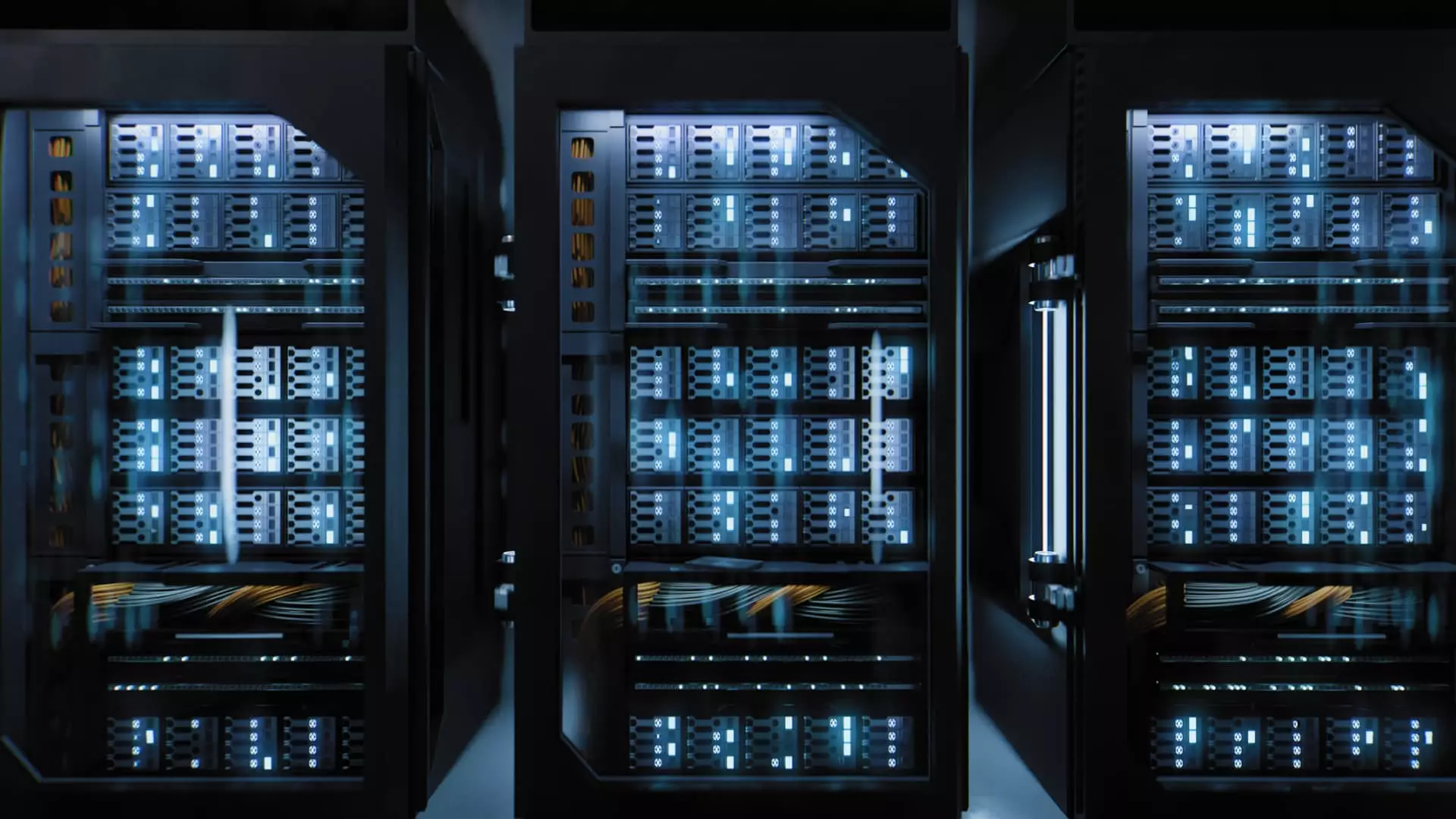The rapid acceleration of artificial intelligence (AI) technology has triggered an urgent reevaluation of operational practices within the data center sector, particularly in Europe. This shift is prompted by the growing demand for energy-efficient solutions necessary for supporting advanced AI applications. The burgeoning reliance on high-powered chips, such as those produced by Nvidia, signifies a formidable challenge for data centers aiming to harmonize increased energy requirements with sustainability targets outlined by the European Union (EU).
As AI technology continues to expand, industry research from Goldman Sachs predicts a staggering 160% increase in the demand for data centers by the year 2030. Such growth, while indicative of AI’s increasing influence in various sectors, poses substantial threats to Europe’s ambitious decarbonization objectives. Specialized chips, particularly graphics processing units (GPUs), are crucial for training complex AI models and are notoriously energy-intensive. For instance, a square meter of data center space occupied by AI can consume approximately 120 kilowatts of energy—equivalent to the energy needs of 15 to 25 homes. This raises critical questions about the sustainability of AI-centric data processing.
The substantial energy output generated by these advanced chips necessitates innovative cooling solutions. Traditional cooling methods may not suffice due to the increased heat output from dense computing environments. Consequently, the industry is exploring liquid cooling systems as a more efficient alternative to air cooling. However, this shift poses a paradox for European data center builders who may need to lower their water temperature to account for the hotter operational needs of AI chips, potentially reverting to unsustainable practices reminiscent of pre-modern energy efficiencies.
Michael Winterson, chair of the European Data Center Association (EUDCA), expressed concerns regarding the implications of this trend. He characterized the current AI landscape as a space race centered around American technology dominance, where environmental considerations fall secondary to market power. This sentiment underscores the ongoing tension between technological advancement and environmental responsibility.
Simultaneously, the EU has initiated the Energy Efficiency Directive, mandating transparency around data center power consumption. This Directive aims to ensure that large facilities actively monitor and report their energy usage, thus fostering accountability in the wake of increased AI-related energy demands. However, Winterson posits that the industry’s push for lower water temperatures is ultimately incompatible with the EU’s broad sustainability framework.
Energy management firms, like Schneider Electric, are at the forefront of discussions with EU officials about potential solutions for the energy challenges posed by AI in data centers. The conversations include finding alternative sources of energy and enhancing coordination with utility providers. Addressing the second-largest consumer of energy within data centers—cooling mechanisms—is paramount to achieving the EU’s goal of a pronounced reduction in overall energy consumption.
An important dialogue is emerging among data center operators regarding how to adapt to the dual challenges of high-powered technology and environmental sustainability. Companies like Equinix are engaged with their customers to navigate the complex interplay between server demands and efficient power utilization. With the increasing density of server technologies, firms are compelled to reevaluate their infrastructure designs and energy protocols.
Furthermore, as technology evolves with players like Nvidia introducing energy-efficient architectures, the industry must strike a balance between heightening computational power and maintaining sustainable operations. Advancements in AI may soon enable organizations to run complex models with significantly reduced energy costs compared to predecessor technologies.
The European data center industry stands at a crucial juncture, characterized by the dual imperatives of technological advancement and sustainability. As the landscape of AI continues to expand, European facilities must adopt innovative cooling solutions and adjust operational frameworks to meet stringent energy efficiency standards while responding to the undeniable growth of AI demand. A collaborative approach, involving regulatory agencies and technology providers alike, may ultimately pave the way for a more sustainable future in the face of insatiable data consumption. The road forward involves recognizing that progress in AI technology cannot come at the expense of environmental sustainability and the pressing decarbonization goals that Europe has set.


Leave a Reply